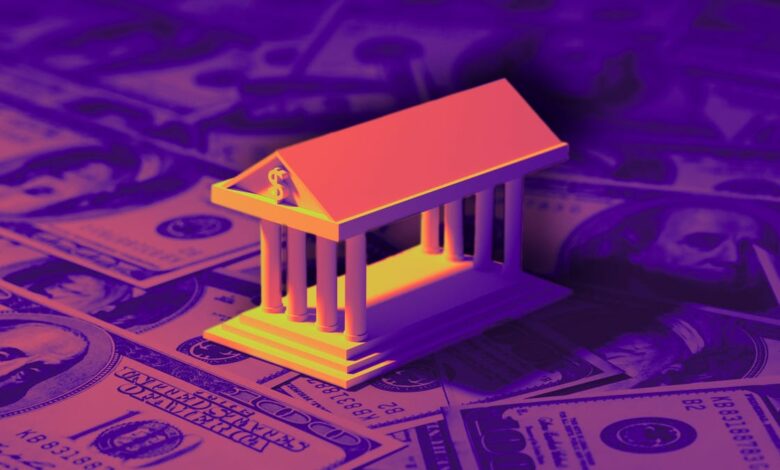Will mortgage rates and HELOC rates drop after the Fed’s rate cut?

Homeowners looking for more affordable interest rates on mortgage loans and home equity lines of credit (HELOCs) are in luck. Now that the Federal Reserve has started lowering interest rates, home loan rates and HELOC rates are on track for a gradual decline.
Home equity loans allow you to borrow money against your home to receive a lump sum of cash, as long as you have sufficient equity (measured as the difference between what you owe on your mortgage and the current market value of your home) . Home equity lines of credit are similar, but work more like a credit card: You can increase or decrease the balance up to a certain limit instead of getting all the money at once. In both cases, they act as a second mortgage, using your home as collateral for the loan.
Whether you’re taking out a mortgage loan or a HELOC to consolidate debt or finance a large project, you should look for the best loan terms. But it is not entirely in your control. Interest rates are influenced by several factors, including the central bank’s monetary policy decisions.
You don’t have to be an expert, but some basic knowledge can help you get the most out of your home equity.
What is the Fed and what does it do?
As the U.S. central bank, the Federal Reserve is “designed to help maintain economic stability,” the U.S. central bank said Jacob Channelsenior economist at LendingTree.
The Fed sets a benchmark interest rate, the federal funds rate, which affects the interest banks charge on a variety of loan products, including home equity. After raising the federal funds rate several times since 2022, the central bank is now reversing course to implement interest rate cuts. After a 0.5% interest rate cut in September, the Fed followed up with a 0.25% interest rate cut on November 7.
The idea is this: high interest rates discourage people from spending and borrowing money, while low interest rates encourage it. In a weaker economy, the Fed would cut rates to stimulate economic activity. In a growing economy, the Fed would raise interest rates to combat inflation.
What influence does the Fed have on housing market rates?
Again, the Fed does not directly set home loan rates or lines of credit. The interest rates you see for home equity products will typically move with the Fed’s interest rate, which is why they have been exceptionally high recently.
If the Fed raises its benchmark rate, banks will likely raise rates on new home equity products, and vice versa, but “the relationship is not necessarily one-to-one,” Channel said. Other economic factors, such as the labor market, can also influence the rates that banks set.
Over the coming year, the central bank will slowly cut interest rates, probably in steps of 0.25%. If that happens, experts say financing costs for home equity products will gradually drop. That will encourage more homeowners (many of whom are reluctant to tap into their home’s equity because of high interest rates) to take out home equity loans, or HELOCs.
There’s one big difference to consider when choosing between a home equity loan or a HELOC. With home equity loans, your interest rate is set at the time you take out the loan, regardless of how the Fed adjusts the interest rate later. For equity lines of credit, the interest rate is adjustable and will continue to follow the movements of the benchmark interest rate.
What is the Fed doing right now?
During the early days of the pandemic, as the economy ground to a halt, the Fed cut rates as much as possible. The idea was to encourage people to spend money during a weakened economy, and it motivated banks and lenders to set historically low mortgage interest rates, as low as 2% or 3%.
As the economy began to recover and inflation soared, the Fed began raising interest rates to slow price growth. The Fed’s higher interest rates also pushed home loan rates higher. In 2021, home interest rates before the Fed’s rate hikes were just 4.4%, and at the end of 2022 they were approaching 8%. Today the average home interest rate is in the mid 8% range.
The Fed has kept these interest rates high in recent years and inflation has indeed started to slow, as planned. The economy in general is also starting to slow down, which has led to the Fed cutting interest rates.
Channel expects that as the Fed shifts gears and implements more rate cuts, this will translate into a gradual decline in rates across the economy, including for home loans and HELOCs, mortgages and cash-out refinancing loans.
What other factors influence mortgage interest rates?
The Fed’s benchmark interest rate isn’t the only thing that affects the interest rate you can get on a home loan or HELOC. Here are some other factors that can change the rate you qualify for:
Your personal financial profile: Banks give their best rates to customers with high credit scores because this indicates they have a strong history of repaying debt on time. The lower your credit score, the higher your interest rate is likely to be. It also matters what other debts you have. If your mortgage is your only debt, you’ll likely get a better rate than if you have a lot of credit card or student debt, for example.
How much equity do you have in your home: Lenders typically allow you to borrow up to 80% or 90% of your home’s value. For example, if your primary mortgage is already 75% of your home value, banks will likely charge you a higher interest rate than if your mortgage is only 40% of your home value, leaving a lot of equity to borrow against. Likewise, borrowing less of your available equity is one way to lower the potential interest rate on a home loan or HELOC.
Which bank or lender you use: Different lenders offer different rates, so it pays to shop around and get multiple quotes before taking out a loan.
What does this mean for you?
If you plan to tap into your home equity sooner or later, getting a new HELOC could be beneficial because the adjustable rate will likely drop as the Fed makes more rate cuts. Just keep in mind that rates may also increase in the future based on the economic outlook, meaning your payments will be less predictable.
Depending on your personal goals and needs, you may be able to take out a fixed rate loan in a few months when interest rates are likely to be lower. The interest on a mortgage loan is fixed in the beginning, so that you miss out on later interest rate drops, but you are protected against possible interest rate increases in the future.
If you’ve already borrowed against your home equity, the same principle applies: you could see your adjustable HELOC rate drop in the coming months if rates are cut by the Fed, but a fixed rate on a home equity loan won’t change .
Basically, how you use your home equity for financing depends on why you need the money. If you use the equity in your home to pay off debts with higher interest rates, such as credit cards, then your home equity is already an improvement.
Even with a good interest rate, a mortgage loan or HELOC always involves some risk. Both products are debts secured against your home, meaning if you don’t pay, the bank can seize your property.




